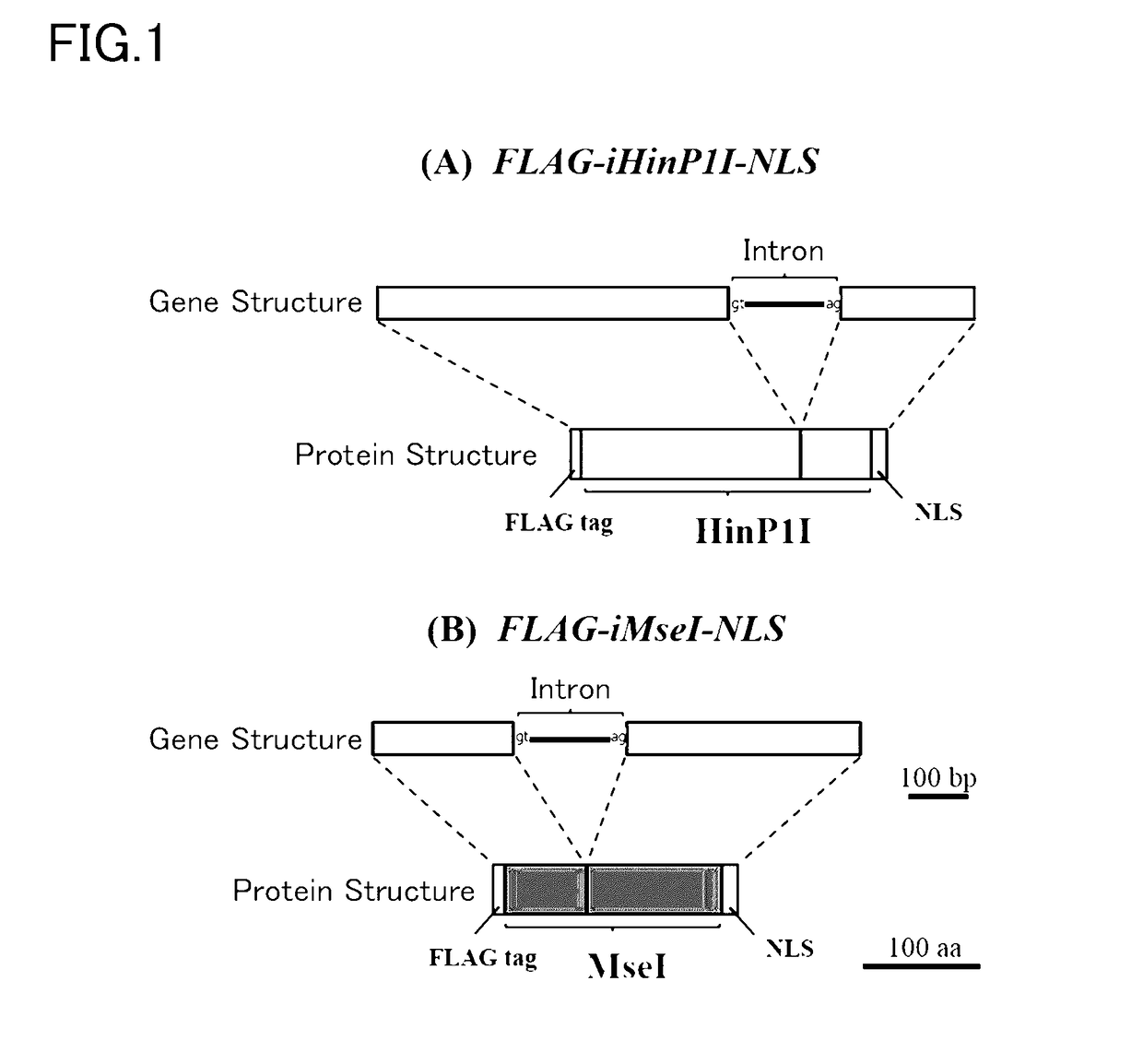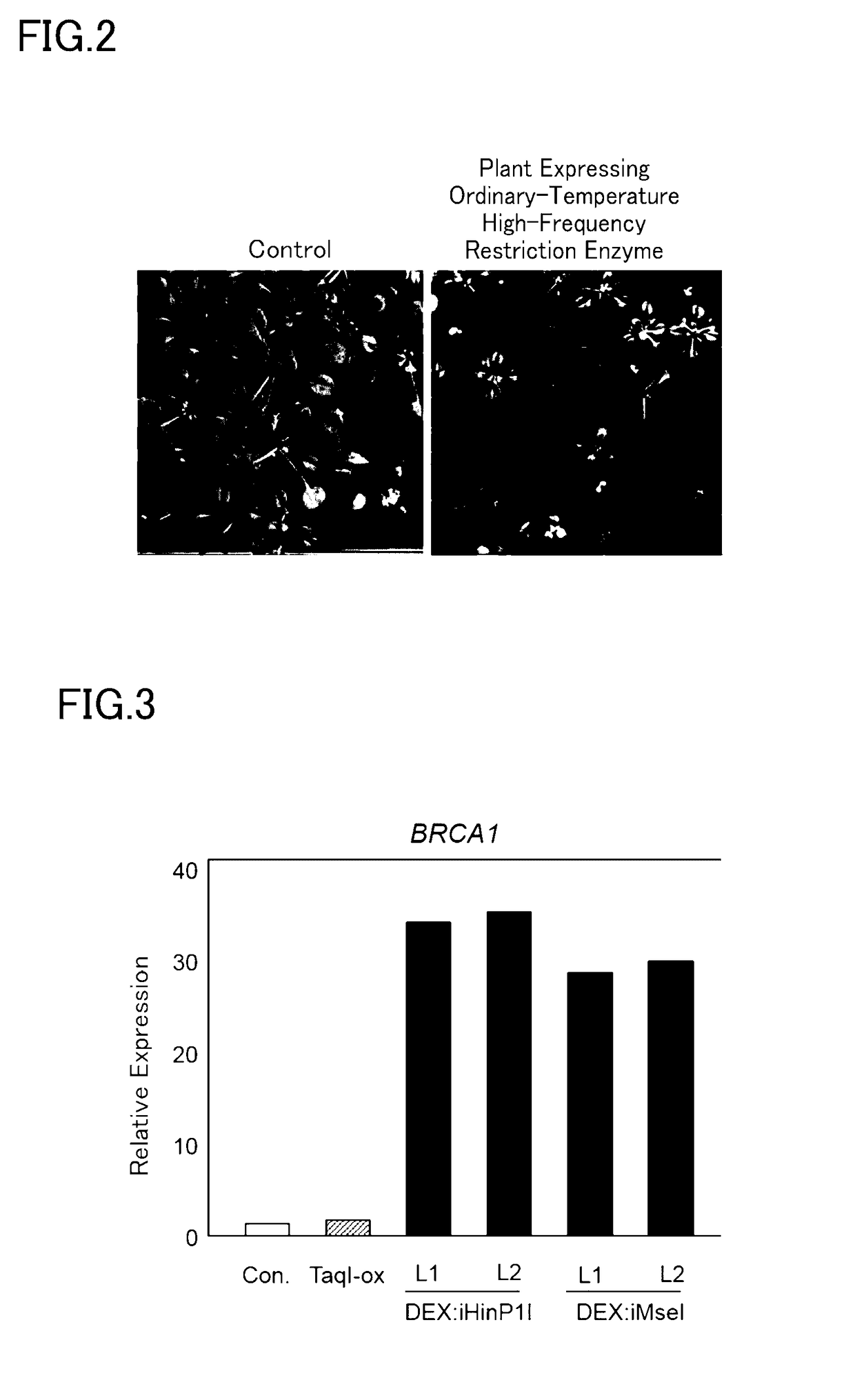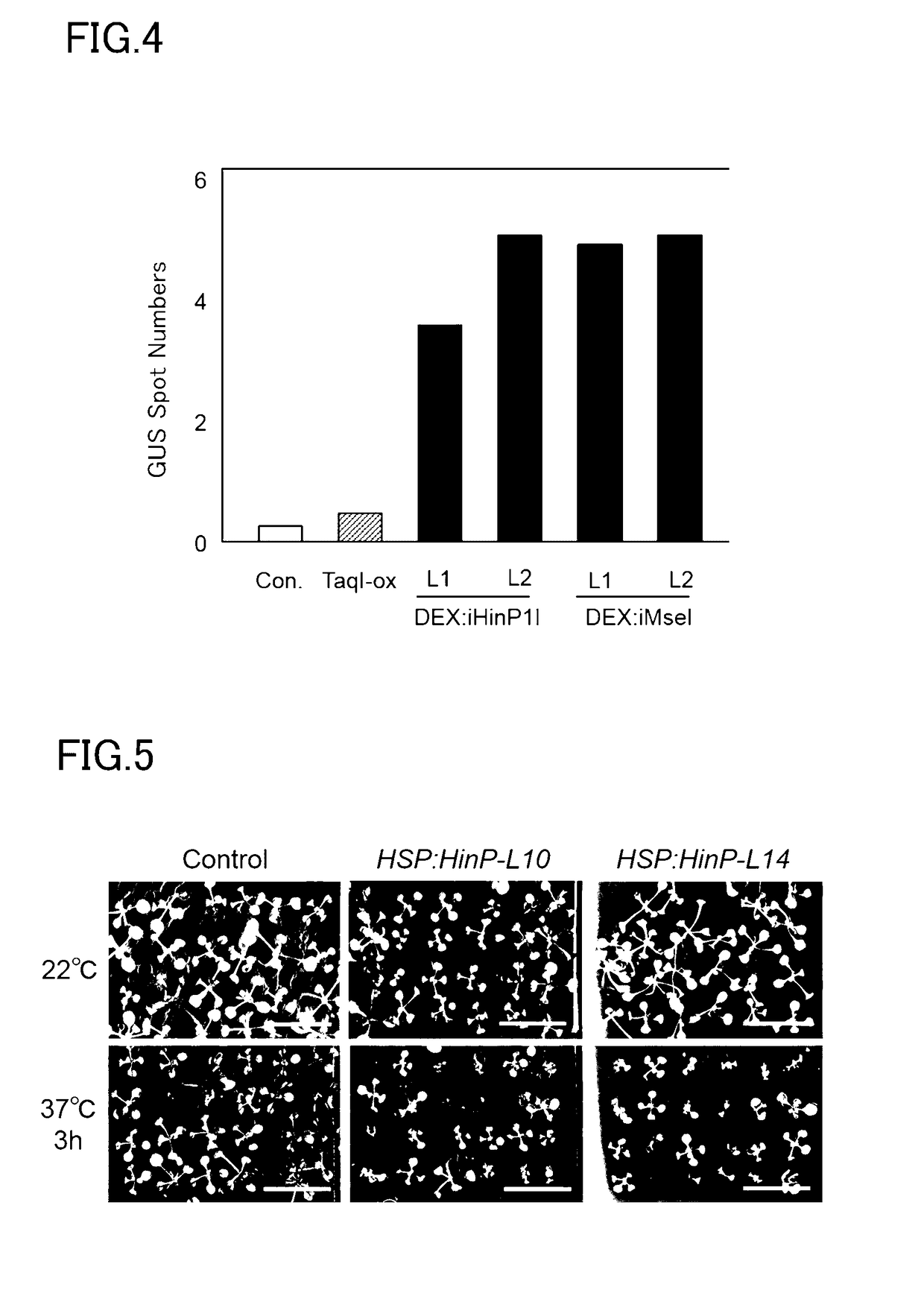Method of modifying genome of organism and use thereof
a genome and genome technology, applied in the field of genome modification of organisms, can solve the problems of increasing treatment time, increasing treatment temperature, and increasing treatment time, so as to reduce the thermal load, reduce the load on the organism, and effectually modify the genom
- Summary
- Abstract
- Description
- Claims
- Application Information
AI Technical Summary
Benefits of technology
Problems solved by technology
Method used
Image
Examples
example 1
[0151](1) Construction of a Plant Expression Vector for the HinP1I Gene and MseI Gene
[0152]The sequences registered in Genbank were consulted for the base sequences for the HinP1I gene and MseI gene (HinP1I gene base sequence: AY849924, MseI gene base sequence: DQ356003). Arabidopsis thaliana codon optimization was carried out on these sequences; the intron sequence derived from castor bean catalase (Ma et al., 2011, Plant Science 181, 188-194) was then inserted; and artificially synthesized genes were designed in which the FLAG tag sequence was ligated at the 5′-end and a nucleus localization signal (NLS) sequence was ligated at the 3′-end. These artificially synthesized genes are designated FLAG-iHinP1I-NLS and FLAG-iMseI-NLS in the following (FIG. 1).
[0153]The following plant expression vectors for these artificially synthesized genes were used: pBI HSP18.2:FLAG-iHinP1I-NLS and pBI HSP18.2:FLAG-iMseI-NLS, in which the gene of interest was located downstream of the HSP18.2 promote...
example 2
[0154](2) Introduction of the Gene of Interest into Arabidopsis thaliana
[0155]Using Agrobacterium carrying pBI HSP18.2:FLAG-iHinP1I-NLS or pBI
[0156]HSP18.2:FLAG-iMseI-NLS or pBI DEX: FLAG-iHinP1I-NLS or pBI DEX: FLAGi-MseI-NLS, each gene was introduced into Arabidopsis thaliana strain 1406 (EMBO Journal (2006) 25, 5579-5590).
[0157]The strain 1406 is constructed by the insertion of a GUS reporter gene having an inverted repeat structure into strain Col-0, such that the GUS gene is expressed when homologous recombination is produced within the GUS gene. It is used in the quantitative analysis of homologous recombination based on this arrangement. An in planta method was used for the transformation method. Seeds recovered after Agrobacterium infection were planted in MS agar medium containing kanamycin (Murashige-Skoog inorganic salts, 1% sucrose, 0.05% MES, 0.8% agar, 50 mg / L kanamycin sulfate). After growth for 2 weeks in a climate controlled room at 22 deg C. using a 16-hour light ...
example 3
[0158](3) Observation of growth for the plant bodies incorporating the DEX: FLAGi-HinP1I-NLS gene or DEX: FLAG-iMseI-NLS (DEX: iHinP1I transgenic strain or DEX: iMseI transgenic strain)
[0159]Seeds from each of the DEX: iHinP1I transgenic strain, the DEX: iMseI transgenic strain, and a transformant strain that constantly expressed TaqI, a heat-resistant high-frequency restriction enzyme (TaqI-ox, Japanese Patent Application Publication No. 2011-160798), were planted in MS agar medium containing kanamycin (Murashige-Skoog inorganic salts, 1% sucrose, 0.05% MES, 0.8% agar, 50 mg / L kanamycin sulfate). After incubation for 2 weeks in a climate controlled room at 22 deg C. using a 16-hour light period / 8-hour dark period and a light intensity of about 30 to 50 umol / m2 / sec, the growth status was inspected. Growth of the individual plants was inhibited for the DEX: iHinP1I transgenic strain and the DEX: iMseI transgenic strain (FIG. 2).
PUM
| Property | Measurement | Unit |
|---|---|---|
| temperature | aaaaa | aaaaa |
| temperature | aaaaa | aaaaa |
| temperature | aaaaa | aaaaa |
Abstract
Description
Claims
Application Information
 Login to View More
Login to View More - R&D
- Intellectual Property
- Life Sciences
- Materials
- Tech Scout
- Unparalleled Data Quality
- Higher Quality Content
- 60% Fewer Hallucinations
Browse by: Latest US Patents, China's latest patents, Technical Efficacy Thesaurus, Application Domain, Technology Topic, Popular Technical Reports.
© 2025 PatSnap. All rights reserved.Legal|Privacy policy|Modern Slavery Act Transparency Statement|Sitemap|About US| Contact US: help@patsnap.com



